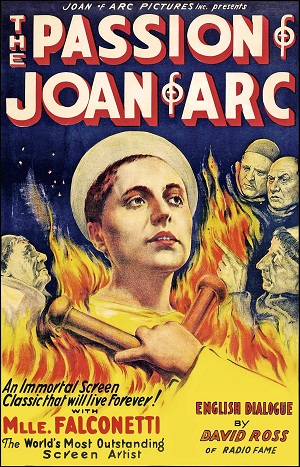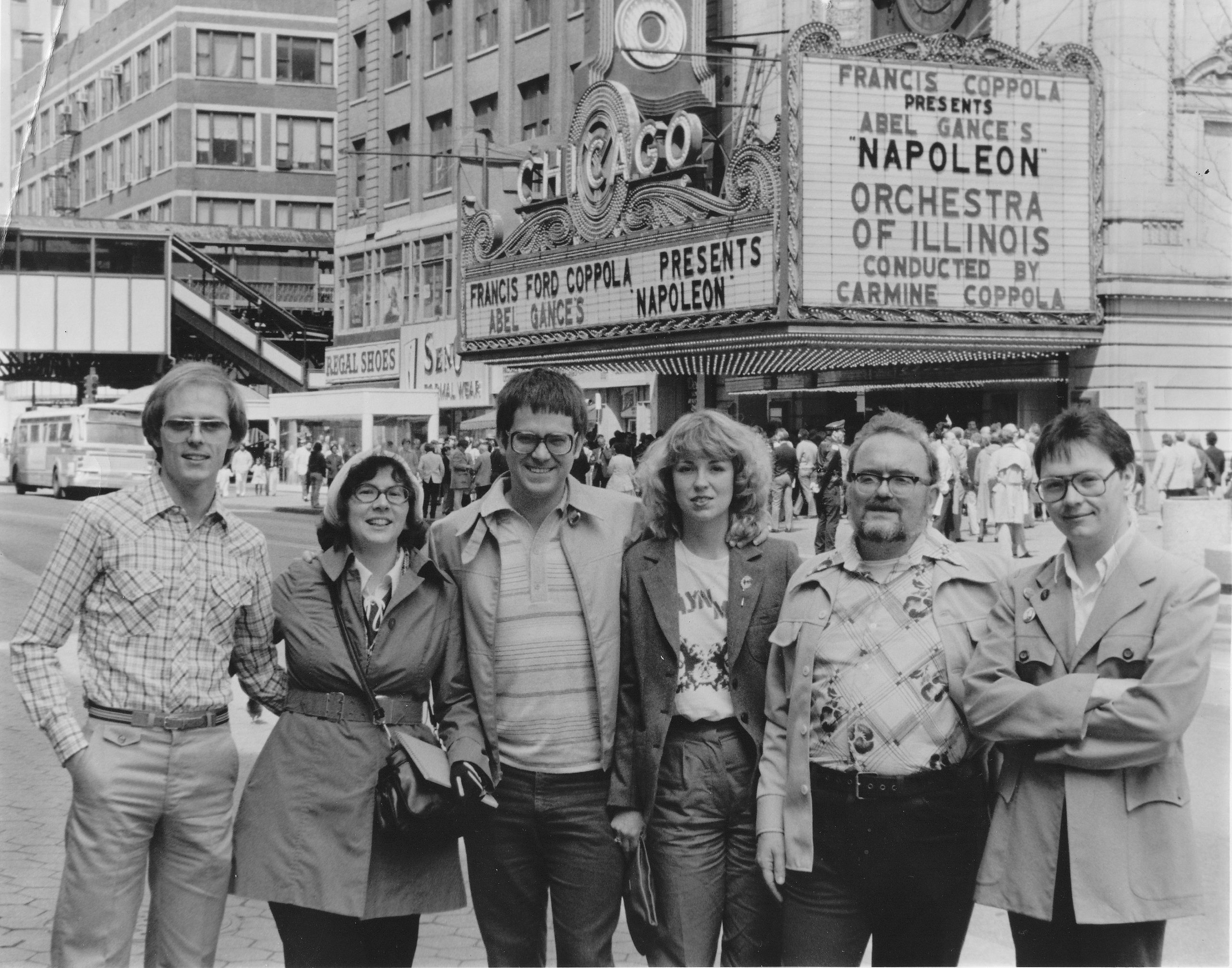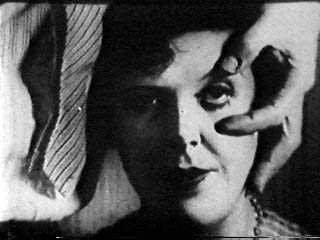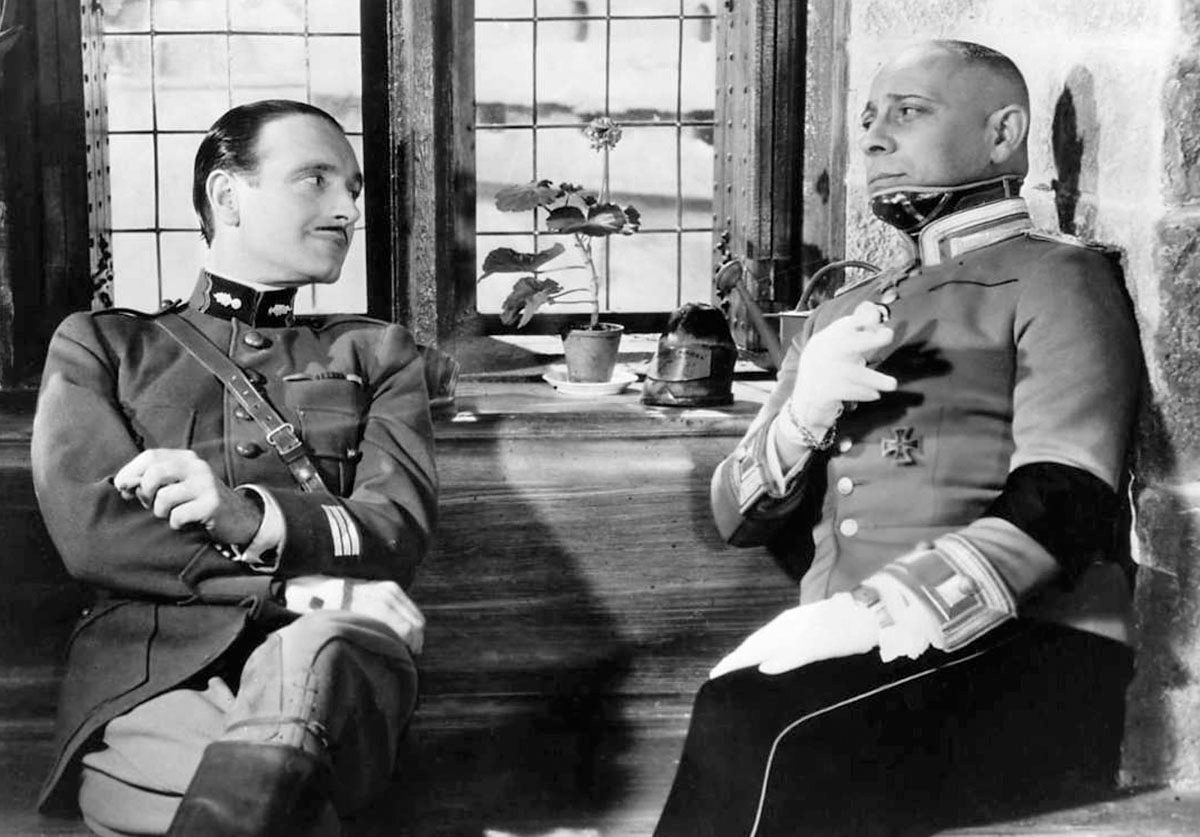6 French Film
Learning Objectives
- Understand the difference between Impressionism and Surrealism
- Learn about some important films from France in between the years 1920-1940
- Learn about the characteristics of French film during this era
French cinema between World War I and World War II was one of the most productive styles of cinema. Cinema in this era was influenced by art. Two forms of art influenced films in the 1920s. First, was the theory of impressionism, and secondly, the theory of surrealism. Both were prominent art movements in France.
French Film 1920-1940: Impressionism
Impressionism became popular in the art world in the 1870s and arrived with a relationship to photography. French impressionist painters were interested in the way the eye saw the world and light. Photography took light and registered it on a medium (paper) to make photographs. French artists of the 1870s were fascinated by the idea of light striking the eye and creating photography. They created a form of art doing the same thing that was jokingly referred to in the press as impressionism. The word impressionism was originally used as an insult to the artists. It suggested that the artists were unable to make a good impression or a good likeness of a scene or a person. The term suggests that because the artists were incompetent to draw or paint with accuracy, their art displayed a fleeting impression of a scene, rather than an accurate description. Critics of the impressionist movement wrongly assumed that impressionism did not aim to create an accurate portrayal of a scene. Impressionist painters wanted to replicate the scene the way a camera would capture a scene with light striking its lens. It did not attempt to be a highly meticulous or photo-realistic form of art. Impressionist film of the 1920s was deeply influenced by the impressionist idea of capturing the moment when light strikes the human eye. This gave the scenes a wispy quality where extensive dialogue and complicated realistic shooting was replaced with scenes in which a few words and a few fleeting glimpses of characters would fill in details. The audience would have to make summations and ideas about the scene. The filmmaker was not required to paint everything in an overly apparent format. The filmmaker’s goal was to create true-to-life scenes that audience members would easily be able to place themselves in.
For example, one of the popular French films in the 1920s was Theodore Dreyer’s The Passion of Joan of Arc. This 1928 film described the trial and a few days in the life of the famous French Saint, who had led French troops against the British, and was betrayed and brought up for trial by a court of both countries.
 In Joan of Arc, we see intense close-ups of Joan’s face during the trial, and we see her anguish at being asked questions about her religion and her view of God. Joan is unable to answer these deeper questions because she simply considers herself a poor girl who is a vehicle for God’s will. The British and French clergy were relieved to get rid of Joan because her religious nature and her devotion made her a danger to reasonable politics, including the war between the two nations. Joan is something of a zealot but her suffering is conveyed in intense close-ups by Dreyer, so that we have a deeper understanding of the character of Joan. However, dialogue and specifics about Joan are not that important to the film. The impressionist style simply gives us impressions of Joan, and what she feels by long intense close-ups that linger on her face. This film is not a standard biography, but a passion play portrayed in tragic human faces.
In Joan of Arc, we see intense close-ups of Joan’s face during the trial, and we see her anguish at being asked questions about her religion and her view of God. Joan is unable to answer these deeper questions because she simply considers herself a poor girl who is a vehicle for God’s will. The British and French clergy were relieved to get rid of Joan because her religious nature and her devotion made her a danger to reasonable politics, including the war between the two nations. Joan is something of a zealot but her suffering is conveyed in intense close-ups by Dreyer, so that we have a deeper understanding of the character of Joan. However, dialogue and specifics about Joan are not that important to the film. The impressionist style simply gives us impressions of Joan, and what she feels by long intense close-ups that linger on her face. This film is not a standard biography, but a passion play portrayed in tragic human faces.
Another classic example of the impressionist style in French film is the 1927 epic by Abel Gance entitled Napoleon. 1927’s Napoleon is a long, three-hour journey through the mind and thinking of the great French leader. Gance is like Theodore Dreyer in The Passion of Joan of Arc, and like Dreyer, he gives us insights into the mind of his hero. He does not dwell in intense close-ups on his subject, although there are some great close-up shots in the film. Instead, Abel Gance combines a group of images quickly, in a fast furry of montage scenes in which we see Napoleon’s life acted out through images from his mind and in his imagination. We are looking inside the mind of Napoleon in light of the film. We are given these fleeting insights into the mind of a genius and a great leader. In one scene, there is one brilliant montage that Gance creates, in which Napoleon and fellow youthful children are having a snowball fight. Gance becomes enormously intoxicated by shooting the back-and-forth angles from one child to another as each of the kids is throwing volleys of snowballs at each other. In time, the scene becomes a chaotic blur of white snowballs flying through the air, and nobody can quite figure out the action of where the balls are going, who is being hit, and who is throwing at each other. Film montage can create a sense of chaos

Gance’s 1927, Napoleon, shown in Chicago, 1981
Gance’s Napoleon is an epic film with spectacular production ideas in which three scenes are often played out simultaneously on the same screen to keep the audience completely engaged and to allow for constant surveying of the screen for new information. Gance wanted massive audience involvement intellectually and pictorially in his films. Gance even photographed a segment of the film in 3-D back in 1927 to show that 3-D might be a way of showing the story of Napoleon more powerfully. Ironically, Gance never used the 3-D ending sequence of Napoleon because he felt it was unnecessary. Gance was famous for using long shots, medium shots, close-ups, and incredibly complex montages. He is known for the interesting introspective shots of each character involved in Napoleon’s rise, and the pivotal performance of Napoleon.
Gance goes into the mind of the leader, portraying scenes from Napoleon’s dreams of ending the French Revolution, to bring order and justice to society. Napoleon decides the only way to end the carnage is to take over the country, remove the people from self-slaughter in a war against the rest of Europe, and unify Europe under French rule. Napoleon’s dream is portrayed in a series of montage scenes showing the destruction of the French Revolution, and Napoleon’s image of how society would look in the future under his leadership. The film uses montage to build these impressionistic views of Napoleon’s life, his career, his battles, and his view of the world. By the end of the three hours we seem to have a great understanding of the leader, and an appreciation for Gance as a filmmaker, as his compilation of a series of images brings us to a deeper understanding of how the leader’s mind works.
Key Takeaways
- Impressionism, a word originally coined as an insult towards artists, represents the late 19th-century art movement which venerated fleeting moments of light.
- Joan of Arc by Theodore Dreyer represents impressionist film in its intense close-up shots, lending audience members a glimpse into the character’s emotions.
- Abel Gance’s, Napoleon, exemplifies the impressionist movement in its use of montage to convey emotion and dive into the mind of his character.
French Film 1920-1940: Surrealism
The other genre that gained adherence in 1920s France was surrealistic film. The French were more influenced by art movements than Americans, who had a more prosaic, naturalistic, and realistic tone in their films. However, in French films, the influence of art was apparent and changed the way French films were made. This made the French style of film deeply different than American films.
The concept of surrealism was based on ideas and notions of Freudian psychology, dream states, the unconscious, and the way people believed the mind works. Surrealism was unlike Impressionism, which focused on a form of visual reality. Impressionism was a movement concerned with science and how the eye sees light. Surrealism was also scientific, but in a different style of science, engaged with psychology. Surrealists were deeply involved in psychology and what we think and what is inside our minds. Andre Breton, one of the fathers of the surrealistic movement, believed that much of surrealism had to do with concepts within the mind. Freud had written his famous book, The Interpretation of Dreams, in 1900. Many of the ideas of surrealism dealt with the idea of dream states, a topic which was addressed extensively by Freud. Surrealists believed that dream states were desires repressed or controlled by the waking consciousness. They believed that when a person goes to sleep, many of the unconscious thoughts that were assumed to be a part of our consciousness during the day are released, and people begin to act out those unconscious thoughts in a dream state. The dream state allowed people to do all sorts of fantastic things that they couldn’t imagine in the daytime. Other varieties of dream worlds, dream actions, carnal thoughts, violent thoughts, and all sorts of images that wouldn’t be acceptable in waking life flourished and could be entertained in the dream state. According to the surrealists, our dream states were a way of liberating the mind. The surrealists believed that in the dream state, we could harness those energies as projects like automatic writing. Surreal artworks like Salvador Dali’s, The Persistence of Memory, capture the nature of one’s consciousness within the dream state. This is shown through the painting’s scenes of a weird infinite horizon, merged with melting clocks and strange dormant creatures in the foreground.
In the 1920s, the Andalusian Dog or Un Chien Andalou concept was constructed by Luis Bunuel and Salvador Dali, two artists from Spain living in Paris at the time. Bunuel, in writing An Andalusian Dog, decided that he would create dream states on film. An Andalusian Dog has little overt meaning and doesn’t make sense in a conventional plot way. It is made up of a series of surreal events that take place one after another. First, we start by seeing a barber looking out at the moon as clouds roll by. It is a full moon, and he pulls out a razor blade and slices open a woman’s eye. It’s a very disturbing and violent scene.

Un Chien Andalou
The next scene is a woman sitting in her room in an apartment alone. She stares strongly at a wall and looks like she is concentrating on something. In the street below a man dressed in a nun or a nurse’s uniform is riding a bicycle down the street towards her building. At some point, he simply collapses and falls off the bike. She recognizes something is wrong and goes to the window. She looks down to the street below and sees the man on the bike. She decides to go down to the man and offer him aid. People are standing around. He is lying on the ground next to his bike. On the back of his bike was a box and something had fallen out of it. People stared at the object, moving it around with a cane. It turns out that the object is a human hand that has been severed. The scene changes back to the woman’s apartment. She takes the nurse’s outfit the man was wearing and adorns the bed with the parts of his nurse’s female outfit. Then she sits in a chair next to the bed and stares at it. Slowly, his body begins to materialize in the clothing she placed on the bed. While she is looking at the bed, she notices that the man has materialized on the other side of the room. He is looking distractedly at his hand when the woman comes over to visit with him. She can’t get his attention because he is obsessed with the image in his hand. Inside his palm, there was a group of ants emerging from a hole in his hand, and he and the woman were both fascinated and horrified by the sight. What these few fragmentary scenes tell us about Andalusian Dog is that it is a fantasy art film, presenting a daydream state. Nothing seems to make sense, and that appears to be Dali and Bunuel’s idea. Things do not make sense in a dream state, and we need to accept dream states as a part of our waking consciousness. This theme emerged from the ideology of the surrealists, who believed that real events or non-realistic events could happen to us at any time. Surrealists believe we need to become aware of our dream states, accept them, and incorporate them into our artistic lives. Surrealists believed that dream states were the key to a deeper understanding of reality. Others thought they were merely extravagant fantasies.
Key Takeaways
- Surrealism was an art movement that followed the inner workings of the mind and consciousness.
- Surrealist films meant to replicate dream-like states, as seen in the famous, Un Chien Andalou, by the prominent Luis Bunuel and Salvador Dali.
- Un Chien Andalou, or The Andalusian Dog, conveyed meaning through a series of scenes, which showed surreal events one after the other.
French Film 1920-1940: For the Love of Art
French film of the 1920s was obsessed with artistry, not with wealth and power. French films were made to be watched to edify the public, not so much to make money. Although, the best French films are some of the best films ever made in the world. Before he made Napoleon in 1927, Abel Gance made another epic in 1923, La Roue or, The Wheel. This is a film that deals with the entire life of a family. Sisif is a railroad engineer, and after a horrible accident, he rescues a little girl from the wreckage. He raises her as his daughter along with his son, Elie. Over time, Sifif falls in love with his adopted daughter, named Norma. His son thinks that Norma is his sister from natural childbirth. Since his wife had perished not long after Elie’s birth. Sifif admits to Hersan that he has fallen in love with his own daughter. Hersan threatens Sifif telling him that if he cannot marry the daughter, he will reveal to her that Sifif has romantic feelings for her. Sifif allows the marriage to take place, although he knows it will not make Norma happy. After some months Norma writes to Sifif to tell him she is unhappy. Elie discovers that Norma is not his natural sister and that he himself might have married her, but now she is in the hands of Hersan. He fights a jealous dual with Hersan, shooting Hersan but falling from a high precipice and dying. In the end, Sifif who is suffering from blindness is cared for by Norma who returns home. Together they build a fatherly/daughter relationship again. One day there is a festival and Norma is sent out by Sifif to dance. At the end of the festival, Norma is happy and Sifif quietly dies at home. The film, while taking on some controversial topics, describes cycles of life.

The Grand Illusion
In the 1930s, French films became even more passionate. In 1937, Jean Renoir produced one of his greatest films, The Grand Illusion. It tells the story of two officers during the First World War. One is French and one is German. In a failed campaign, the French officer is captured by the German officer, and they build a close camaraderie. Though the German officer sees the two officially as enemies, in real life the two are very much alike. They were members of the upper class, possessing aristocratic, heroic, and noble tendencies, both bearing a strong sense of duty. He tells his French counterpart, we are both men of the aristocracy and after the war, our time will pass. Towards the end of the film, the French officer tries to escape and the German officer tells him to stop or he will shoot. He warns him, that though he has grown fond of him and does not wish to hurt him, he must follow his duties. The French officer continued his escape and was shot and killed. Finally, at the end of the film, two lower-class Frenchmen escape from the prison camp. They are aided by a country woman and cross the Alps into French territory. Many people have seen Le Grand Illusion as perhaps the greatest film about war ever made.
Rules of the Game is a study of French cultural behavior. In this film, a series of romantic liaisons take place in a household in the country, amongst the upper-class people, who are disregarding the impending war and the fear that envelops the whole country. Instead of worrying about the state of their world, they spend their time in romantic dalliances. Towards the end of the film, the character of Octave sends his friend Andre out to meet his girlfriend Christine at the greenhouse. The greenhouse was one of the many locations on the property where people spent their time making love. But unknown to Andre or Octave, Andre was mistaken for another man and was shot by one of the angered lovers in the residence. The film is filled with ironies such as this, where an affair of love ends in death. This film addressed thoughts of the fragility of life, the fragility of love, and how French society values some issues highly and disregards other important issues. Films like Rules of the Game comment on the puzzling aspects of French culture. As seen in this example, French films were extremely social and dealt with relationships between people who lived in small towns and villages.
The films of the French film-makers from 1920 to 1940 progressed from impressionistic films that used wispy images of life, filled with sounds and music, to surrealistic images that were far more concrete, but very dream-like, to an emerging style of social realist films that analyzed odd French social codes. French film which emerged in the 1930s was involved with social issues and relationships amongst different people of different classes in French and world society. People were often puzzled by how French society saw the world, but watching the French films of the early twentieth century might dispel some puzzlement over an evolving French society.
Key Takeaways
- Films like Abel Gance’s La Rou represent French film by examining cycles of life.
- French film valued expanding the art form more than the money that could be made from it, although the best pieces of this era are still known to be some of the greatest films ever made.
- French film genres evolved between the 1920s to 1940s. From impressionism, to surrealism, to social realism, these styles were all forms of studying the human experience.
Reading Comprehension
- What is impressionism, and how was it represented in the films Joan of Arc and Napoleon?
- What is the main theme behind the surrealist movement and how does it develop into the films made in this genre?
- What are the characteristics of French film between 1920-1940, and what inspired these attributes?
Terms
Montage: The connecting of scenes in different ways by editing.
Impressionism: A style of art popular particularly in France from 1870-1900. French art influenced the process of filmmaking and many French films were influenced by this concept of art that was based on the science of how the eye and the retina picked up light and images.
Jennifer Mei, CC BY 2.0 <https://creativecommons.org/licenses/by/2.0>, via Wikimedia Commons
Unknown. Publisher: New York : Eloquent Press, N. Morgillo, Public domain, via Wikimedia Commons
World Pictures, Public domain, via Wikimedia Commons
Films:
Renoir, Jean. Rules of the Game (1939)
Renoir, Jean. The Grand Illusion (1937)
Méliès, George: The Impossible Voyage (1904)
Dreyer, Theodore: The Passion of Joan Du Arc
Gance, Abel: La Roue (The Wheel) (1923)
Gance, Abel: Napoleon (1927)
Dali, Salvador and Bunuel, Luis: Andalusian Dog (1929)

